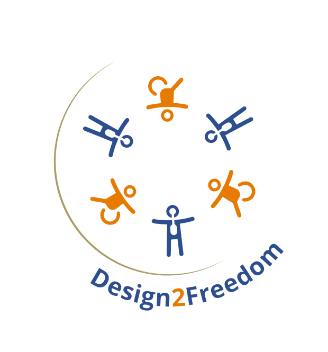Course MOOC
According to the WHO, 90% of people who need assistive technologies do not have access to them. In the case that people with disabilities who have access, 29.3% abandon their use altogether (Phillips & Zhao 1993). This is largely due to the fact that the user is not involved in the design and selection of assistive technologies and has to adapt to standardised orthopaedic models that do not take into account his or her specific reality.
This situation perpetuates the difficulties faced by people with disabilities in achieving autonomy and limits their right to live independently (recognised in UNCRPD art.9 and 19).
University education must respond to the needs of today’s society, and according to the European Pillar of Social Rights inclusion is a cross-cutting European policy priority (EPSR). Society must be transformed to become increasingly inclusive and leave no one behind (Agenda 2030), but it remains essential that people with disabilities have useful assistive technologies to ensure their participation in society. Therefore, it is necessary that university courses related to product and service design include inclusive and Person-Centered Design (PCD) approaches that involve people with disabilities (PWD) in the process of designing their own assistive technologies. This will advance the awareness of the professionals of the future towards inclusion.
There is growing evidence that participatory and inclusive methodologies are more effective in achieving meaningful learning for students (Rodriguez and Rebolledo, 2017). There are multiple experiences in different contexts (University, NGOs, social economy) of the use of this type of methodologies – such as learning by doing, service-learning, challenge-based, Design Thinking, Hackathon, Wikisprints – that applied to the design of person-centered products and services are giving useful but disintegrated results.
Therefore, Design2Freedom, through this MOOC, promotes the incorporation of Person-Centred Design applied to the design of products for people with disabilities in university education, through testing and evaluating the use of participatory and inclusive methodologies for learning.
The main objectives for this MOOC Course are:
- Provide educational tools and resources for teaching Participatory and Inclusive Disability Centered Design.
This objective contributes directly to promoting the cross-cutting incorporation of Disability Centered Design in university curricula by encouraging the use of participatory and inclusive methodologies in various ways.
Content of the MOOC course Design2Freedom: a path to inclusion through a Person-Centered Model are:
- Diversity and disability
- Accessibility
- Active inclusive methodologies
- Person-Centered Model
5.Products and assistive technology
6.Design Thinking Methodology
Registration is very easy.
Just click on the Register button and fill in the data. A confirmation e-mail will be sent to the e-mail address provided.
